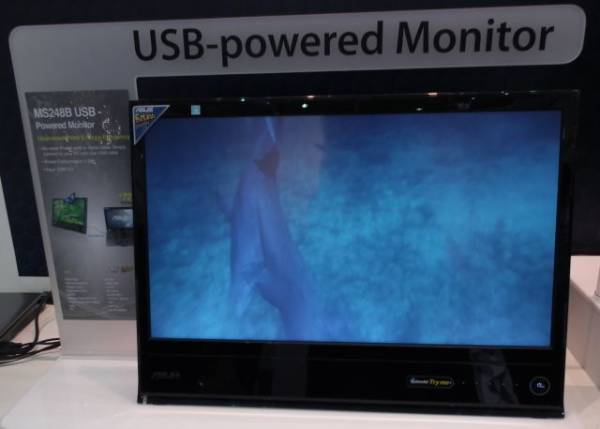Asus recently demonstrated a USB-powered monitor, the MS248B, which is a modification of the current MS248H. You may want to know why this is so significant. What if I told you that the 24-inch monitored has just one USB 3.0 port at the back, used for transmitting both power and data through, again, just one USB 3.0 cable.
That's right, now I've got your attention. USB 3.0 can transmit more data and provide 80 percent more power available for configured devices (900mA vs 500mA) compared to USB 2.0, according to IT Pro Portal. Furthermore, Asus has also managed to trim down the power consumption to a just 9W, which compares very well with the 33W that the MS248H reportedly consumes.

The rest of the specifications are fairly standard, but it's worth noting that Asus hasn't skimped out anywhere either: full HD (1920 x 1080 resolution), 10,000,000:1 contrast ratio, and a 2ms response time. This all fits in an ultra slim 16.5mm profile surrounded by a glossy piano black bezel and the usual LED touch-sensor buttons. Asus says it has no plans to incorporate other features like a card reader, webcam, Ethernet, USB ports, or audio ports.
Now, USB-powered monitors aren't a new thing, but they've typically been quite small (think 10-inches). It's always fun to connect as many of these as you have USB ports on your laptop, but it's not as practical as connecting two large monitors on either side.
USB 3.0 has the extra bandwidth required to make USB-powered monitors at a decent size. We hope that in the next few years they will start to take over.
https://www.techspot.com/news/44127-asus-offers-24-inch-monitor-powered-solely-by-usb-30.html